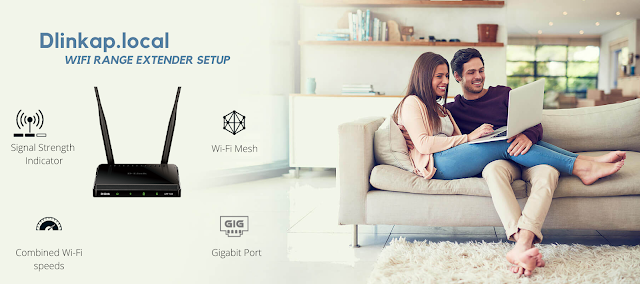The Ultimate Guide to D-Link Extender Login: How to Set up and Configure Your D-Link Range Extender
D-Link range extenders are a popular choice for boosting Wi-Fi signal strength and coverage in homes and small offices. They're easy to install and configure, and offer reliable performance. However, before you can start using your D-Link range extender, you'll need to log in to its configuration page and set it up properly.
In this blog post, we'll walk you through the entire process of Dlink extender login, from finding your extender's IP address to setting up a secure network. We'll also cover some troubleshooting tips to help you get the most out of your D-Link range extender.
Step 1: Find Your D-Link Extender's IP Address
The first step in D-Link extender login is to find your extender's IP address. This is the address you'll use to access your extender's configuration page.
To find your extender's IP address, follow these steps:
- Connect your computer to your D-Link extender's network.
- Open a web browser and enter Dlinkap.local or "http://192.168.0.50" in the address bar.
- If prompted, enter your D-Link extender's login credentials (the default username is "admin" and the default password is blank).
Once you've logged in, you'll be able to access your extender's configuration page and start setting it up.
Step 2: Set Up Your D-Link Extender
Once you're logged in to your D-Link extender's configuration page, you can start setting it up. Here are the steps you'll need to follow:
- Click on the "Wireless Settings" tab and select "Manual Wireless Connection Setup."
- Enter your preferred network name (SSID) and security settings. Make sure to use a unique SSID and a strong password to keep your network secure.
- Click "Save Settings" to apply your changes.
Once you've completed these steps, your D-Link range extender should be set up and ready to use.
Step 3: Configure Your D-Link Extender
Now that your D-Link range extender is set up, you can configure it for optimal performance. Here are some tips to help you get started:
- Position your extender in a central location to maximize its coverage area.
- Use the same network name (SSID) and password for your D-Link extender and your main router. This will allow your devices to seamlessly switch between the two networks as needed.
- Update your extender's firmware regularly to ensure it's running the latest software and security patches.
By following these tips, you'll be able to get the most out of your D-Link range extender and enjoy reliable Wi-Fi coverage throughout your home or office.
Troubleshooting Tips
If you're experiencing issues with your Dlink local setup, here are some troubleshooting tips to help you out:
- Make sure your extender is properly plugged in and turned on.
- Try resetting your extender to its factory default settings by pressing and holding the reset button for 10 seconds.
- If you're still experiencing issues, try updating your extender's firmware to the latest version.
If none of these troubleshooting tips work, contact D-Link support for further assistance.
Conclusion
D-Link range extenders are a great way to extend the coverage of your Wi-Fi network. By following the steps outlined in this guide, you'll be able to log in to your D-Link extender, set it up, and configure it for optimal performance. Remember to position your extender in a central location and update its firmware regularly to ensure it's running smoothly.
If you do encounter any issues, don't hesitate to reach out to D-Link support for assistance. They'll be able to help you troubleshoot any problems you may be experiencing and get your D-Link range extender up and running in no time.
Overall, D-Link range extenders are a great investment for anyone looking to boost their Wi-Fi coverage. With this guide, you'll be able to set up and configure your D-Link extender with ease, and enjoy reliable Wi-Fi coverage throughout your home or office.




Comments
Post a Comment